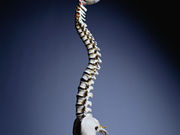Still, spinal fusion provided better results in study of only patients with spondylolisthesis
THURSDAY, April 14, 2016 (HealthDay News) — Spinal fusion surgery is too often used to treat lower back pain caused by stenosis when decompression would suffice, but is still beneficial for select patients, according to a pair of new clinical trials published in the April 14 issue of the New England Journal of Medicine.
One trial involved 247 patients aged 50 to 80 years with back pain due to stenosis. About half also had spondylolisthesis. All were randomly assigned to receive either decompression surgery alone or decompression with fusion. The researchers found no significant differences in quality of life or ability to walk between the groups, at either two or five years following surgery. The proportions who required follow-up surgery were also about the same — 22 percent for fusion patients and 21 percent for decompression patients. But fusion patients required 7.4 days of hospitalization on average versus 4.1 days for decompression patients. Fusion patients also needed longer time in the operating room, lost more blood, and had higher surgical costs.
In the other trial, researchers assigned 66 patients, average age 67, to either fusion or decompression. But their trial focused solely on patients with spondylolisthesis. The researchers found that the fusion group had a significantly better quality of life as much as four years following surgery, compared with the decompression group. Lead researcher Zoher Ghogawala, M.D., of the Lahey Hospital and Medical Center’s Spine Research Center in Burlington, Mass., told HealthDay that people who received spinal fusion were less likely to need a follow-up surgery: 14 percent compared with 34 percent of those in the decompression-only group.
Based on the first study’s results, “there’s really no benefit associated with adding a spinal fusion for patients who have stenosis without malalignment,” Ghogawala said. “What our study did was, we focused entirely on patients who had a malalignment of their spine, and we found they had better outcomes with spinal fusion.”
Copyright © 2016 HealthDay. All rights reserved.








